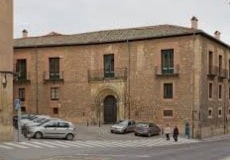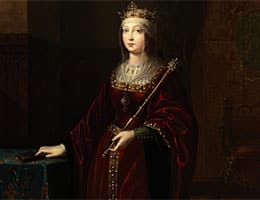 The mayorazgo is an institution that is part of civil law and that allows maintaining ownership of certain rights or assets within a family . Its scope is given by the conditions dictated in its establishment or by the prescriptions of the law; Currently its validity is limited to titles of nobility .
The mayorazgo is an institution that is part of civil law and that allows maintaining ownership of certain rights or assets within a family . Its scope is given by the conditions dictated in its establishment or by the prescriptions of the law; Currently its validity is limited to titles of nobility .
Formerly, the mayorazgo was established as a way of distributing assets for the benefit of the first-born . In this way, the family assets were not dispersed.
While sales and various inheritances could threaten the wealth and power of a family, the primogeniture was a system that guaranteed the maintenance of privileges.
The assets linked to an estate, in short, could not be distributed as inheritance or alienated . At the same time, it was possible to incorporate new elements into the relationship. In this way, everything included in the estate was indissolubly inherited by a single person, who was usually the first-born male, although it could be another son.
At the time of setting the conditions of the mayorazgo, the obligations acquired by the heir were also defined. One of the most common was the adoption of the surname if one did not have one.
The regulation of the mayorazgo was carried out through the so-called Toro laws in the year 1505, when the Catholic Monarchs reigned. These arose from legislative activity and were established after the death of Queen Isabel in the city of Toro, within the framework of a meeting of the Cortes. This is a group of 83 laws that were promulgated on March 7 in the name of Juana I of Castile , then queen.
It was in Isabel's will that the royal family found the initiative to design these laws, which began with the creation of a commission of lawyers, among whom were doctors Juan López Palacios Rubio, Lorenzo Galíndez de Carvajal and Días de Montalvo and the bishop of Córdoba.
Although the mayorazgo arose, therefore, within the realm of royalty, it is worth mentioning that some families of the bourgeoisie , which at that time began to emerge in Castile, also subscribed to this legal figure to carry out the control of the subdivision. of their assets and protect their economic power.
 Generally, the mayorazgo was created in more than one phase; In the first, a solar house or a plot of land was usually linked, sometimes including a noble title, which passed with all other assets. Those who were excluded from the mayorazgo were in some way given the status of nobility (a term that in Spain and Portugal is used as a synonym for "nobility", but also for "nobility without title").
Generally, the mayorazgo was created in more than one phase; In the first, a solar house or a plot of land was usually linked, sometimes including a noble title, which passed with all other assets. Those who were excluded from the mayorazgo were in some way given the status of nobility (a term that in Spain and Portugal is used as a synonym for "nobility", but also for "nobility without title").
Although the mayorazgo gave them the possibility of adding other assets to the bond , it did not allow them to distribute as inheritance or dispose of those that had already been linked. This institution was the last of a long number of privileges that the Castilian nobles received from Henry IV . Later, the Catholic Monarchs granted them positions in the government, and in this way they became more influential and powerful than those of the other kingdoms.
The Casa del Mayorazgo de los Cáceres , on the other hand, is a building located in Segovia , a city in the Spanish community of Castilla y León . The construction was born as a fortress that protected the city walls.
In the municipality of Aldeasoña ( Segovia ), meanwhile, there is another Casa del Mayorazgo . It is a manor house built by the Núñez family so that their assets would not be divided.
